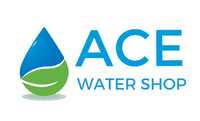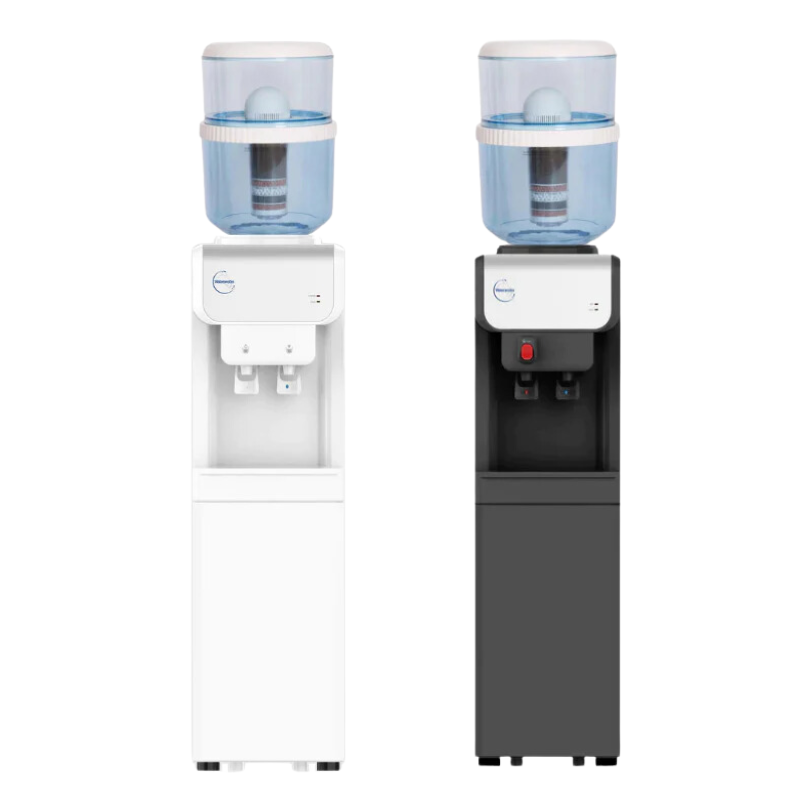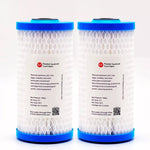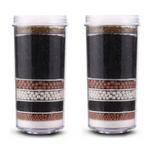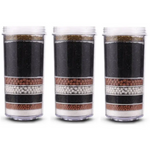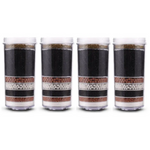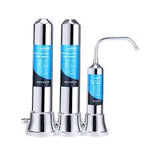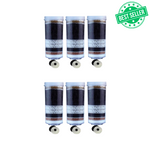You have no items in your shopping cart.
Multi-Stage Filtration Design: FAQs
Water filtration is typically a multi-stage process. Your standard under-sink water filter is likely a multi-stage unit as well. It means that it removes contaminants from your tap water using more than one type of filter media. Some examples of filters include sediment and carbon block filters. It may also use different versions of the same filter media (e.g., granular activated carbon and carbon block filter). Even single-stage filters might have two or more types of filtration material in them.
What is the difference between a two-stage water filtration system and a three- or four-stage reverse osmosis deionization system? How many stages do I need for my water filter?
Here are some popular questions about multi-stage filtration design systems that may answer some of your questions as well.
What Are the Functions of Each Stage of a Reverse Osmosis Filtration System?
It includes three distinct filter stages in a basic RO system. Each filtration stage is vital in and of itself. But they also work together to provide the greatest water filtration possible.
Sediment filtration cleans the water by removing dust, debris, particles, and corrosion. They're usually used as the initial filtration stage to help remove or trap larger particles. So that subsequent steps can focus on trapping contaminants that sediment filtration can't.
The following phase is carbon filtration. It absorbs tastes, odors, cloudiness, colors, and other chemicals such as volatile organic compounds (VOCs), chlorine, and chloramines. It happens before the water moves on to the next stage. The most extensively used water filtration system on the market is carbon filtration. It's because it is particularly effective at removing chlorine from water and providing a clean, crisp flavor to the end-user. On the other hand, carbon can eliminate pollutants with smaller molecule sizes or hazardous toxins like heavy metals and arsenic.
The final stage of the filtration process, reverse osmosis, is also the heart of the entire system. It pumps water through a semipermeable membrane with a rated pore size of 0.0001 microns at this stage. It eliminates all contaminants such as lead, arsenic, and nitrates from the water to the tune of 99 percent.
After Reverse Osmosis, Why Do We Add Further Stages?
Reverse osmosis water is sometimes described as flavorless water, which many people are unfamiliar with. Providing a post-taste refining coconut shell carbon filter to the water helps remove the leftover flavor while adding a little sweetness. It includes a remineralization filter in certain reverse osmosis systems to help restore the mineral taste.
How Many Reverse Osmosis Filtration Stages Are Required?
To remove all contaminants from the water, just the reverse osmosis stage is required. After that, it requires a few actions to get rid of the reverse osmosis taste. However, as previously said, the processes preceding it are designed to assist in the removal of all of the larger impurities so that reverse osmosis can function more efficiently and last longer. Four processes are optimal from a cost and performance standpoint: sediment filtration, carbon filtration, reverse osmosis, and a post-taste refining filter.
Is It True That Five Filtration Stages Are Better Than 4?
Five-stage reverse osmosis systems are among the most popular on the market. Is it true that 5 phases are better than 4? The truth is that the answer is no. Before reverse osmosis, many of the 5-stage RO systems have two carbon filtering stages. It could help remove even more impurities from the water before it reaches the membrane, reducing the strain on reverse osmosis.
However, let's look at the system's specifications closely. We'll discover that most of them have a GAC (Granular Active Carbon) filter on the second stage and a carbon block filter on the third stage, or two of the same carbon block on the second and third stages. GAC carbon is a significantly less effective and cheaper alternative to a carbon block. It pushes the water through a filter that contains suspended carbon particles. While it retains some impurities within the carbon pores, most contaminants bypass the filter without ever contacting the carbon. As a result, it requires a third-stage carbon block filter to catch pollutants effectively.
In terms of pollutant removal, systems with two carbon blocks on the second and third stages may be more effective than systems with one GAC and one carbon block. They do, however, run into the problem of lowering the water pressure to the membrane. The less water pressure applied to the membrane, the less effective the membrane, creating less pure water. This type of setup can hinder the system's performance more than it helps.
So There's No Added Benefit to Adding Multi-Stage Filtration Design?
Also, what kind of water filter do you require? It's highly dependent on the sort of filter in question. If you want to help destroy and prevent bacteria growth in water that hasn't been chlorinated, you can use UV (ultraviolet) filtration. It's most often the case for those who live in rural areas or rely on the ground or well water as their primary drinking water supply. Most city dwellers would not have to worry about bacteria growth. It's because they add chlorine or chloramine to the water to prevent bacteria growth.
FINAL THOUGHTS: Multi-Stage Filtration Design: Frequently Asked Questions
There's no point in having two stages of carbon filters if they're both employing the same type of filtering as the first.
So, when you're ready to acquire a Reverse Osmosis system for your home, be sure you understand exactly what you're getting and whether you need it.
